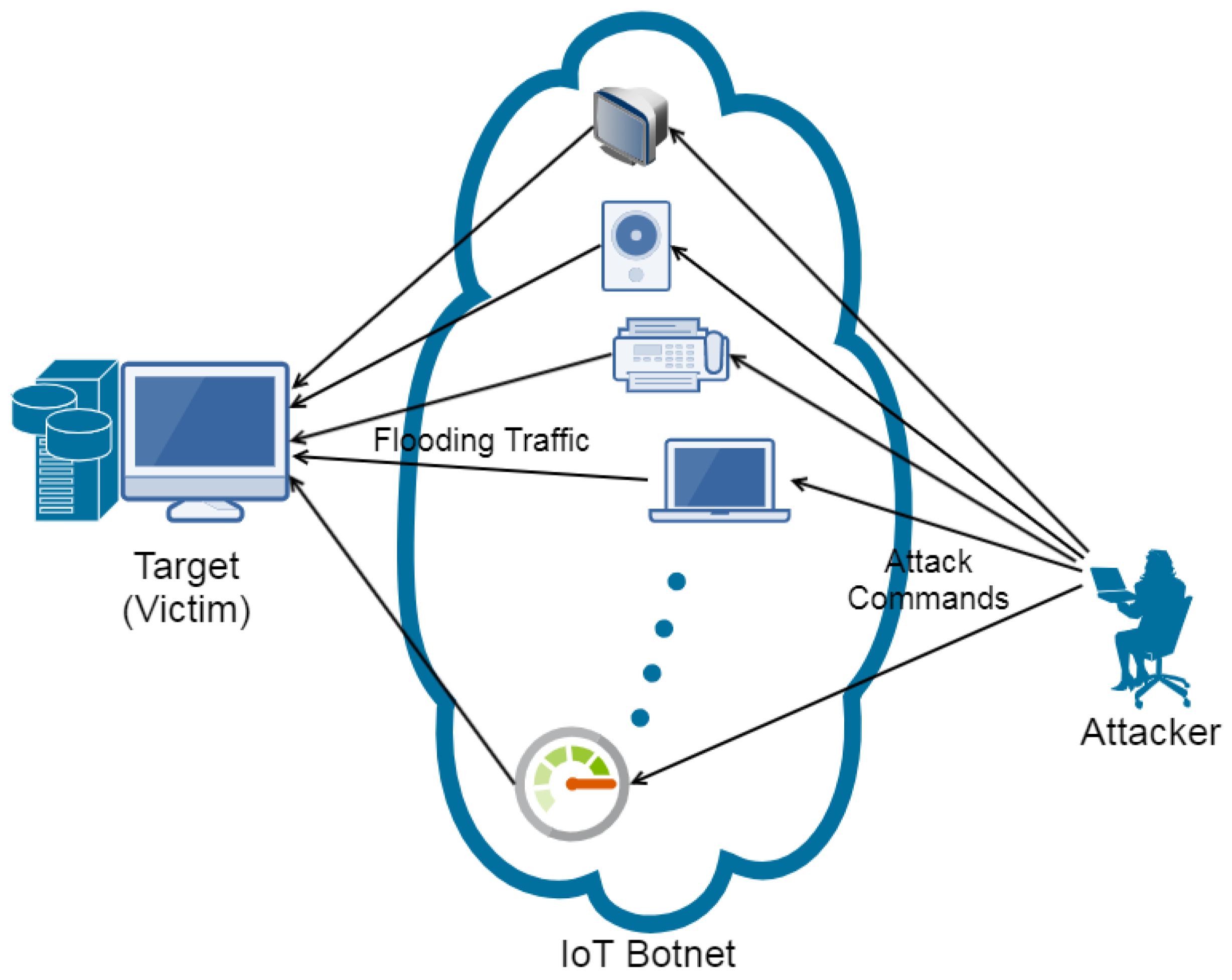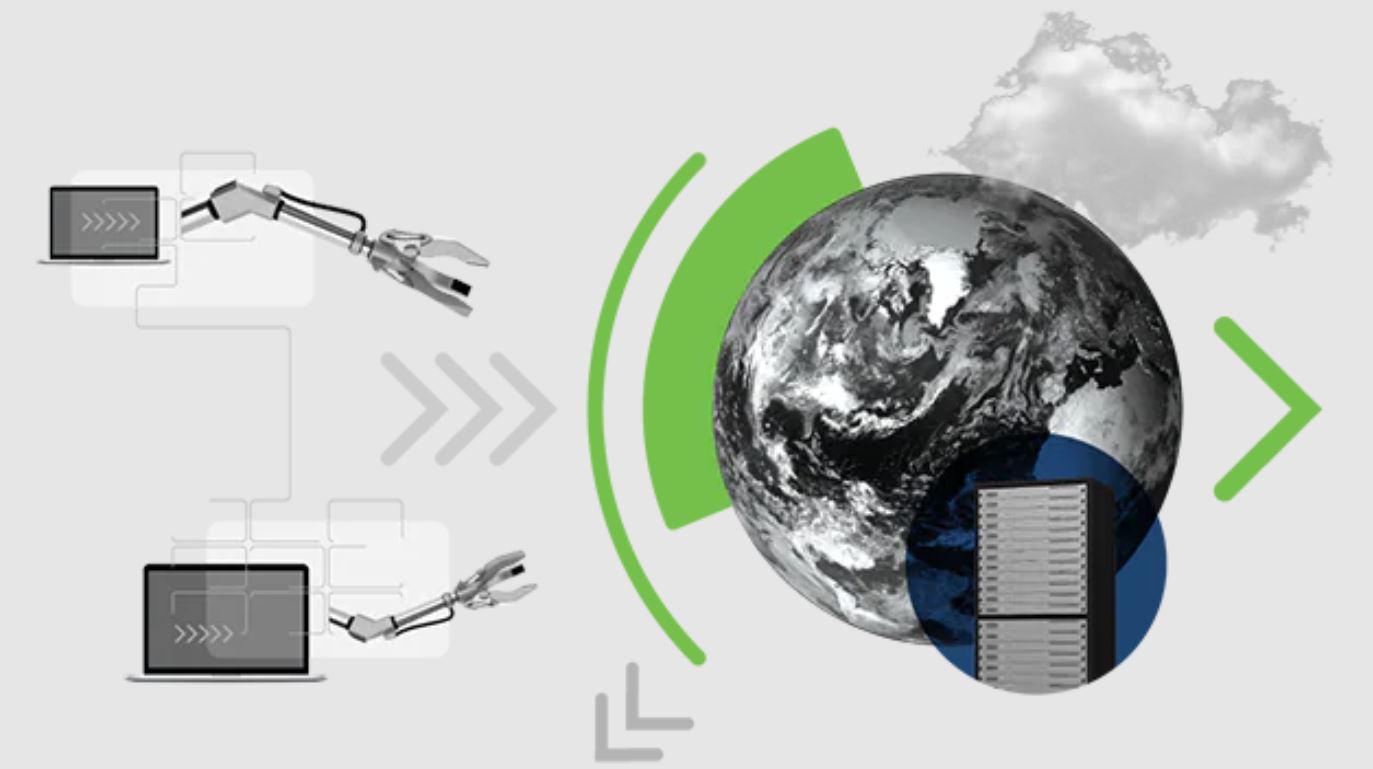Introduction
The Internet of Things (IoT) has revolutionized the way we live, providing a connected network of devices that seamlessly integrate into our daily lives. From smart home appliances to wearable fitness trackers, IoT devices have become increasingly popular due to their convenience and functionality. However, this surge in IoT devices has also brought about significant security risks that need to be acknowledged and addressed.
IoT devices, unlike traditional computers and smartphones, often lack the necessary security measures to protect against malicious attacks. This makes them more vulnerable to cyber threats and poses a greater risk to the overall security of a network. With their growing prevalence and interconnected nature, the security of IoT devices is of paramount importance.
This article will delve into the specific security risks associated with IoT devices and explore why they pose a greater threat compared to other computing devices on a network. By understanding these risks, users can take appropriate measures to safeguard their IoT devices and the network as a whole.
Definition of IoT devices
The Internet of Things (IoT) refers to a network of physical devices, vehicles, appliances, and other objects embedded with sensors, software, and connectivity capabilities that enable them to collect and exchange data.
IoT devices are designed to connect to the internet and communicate with one another, creating an ecosystem of interconnected devices. These devices can range from smart thermostats and surveillance cameras to fitness trackers and household appliances.
What sets IoT devices apart from traditional computing devices is their ability to collect and transmit data autonomously without human intervention. This data can be analyzed and utilized to improve efficiency, enhance user experience, and enable automation.
IoT devices typically consist of three components: sensors or actuators, connectivity modules, and software. Sensors gather data from the environment, such as temperature, humidity, or motion, while actuators can perform actions based on that data, such as adjusting the temperature or activating a security alarm. Connectivity modules allow the devices to connect to the internet and other devices, enabling seamless communication and data exchange. The software component is responsible for controlling the device’s functionality and handling data processing.
It is important to note that IoT devices encompass a wide array of products, ranging from consumer electronics to industrial machinery. They have become increasingly prevalent in various sectors, including healthcare, transportation, manufacturing, and smart homes.
With the rise of IoT devices, there is an increasing need for robust security measures to protect against potential vulnerabilities and threats that can arise from their usage.
Overview of the security risks associated with IoT devices
While IoT devices offer numerous benefits and convenience, their widespread adoption has also introduced significant security risks. These risks can lead to unauthorized access, data breaches, and even the compromise of an entire network. Understanding these risks is crucial for mitigating potential threats. Here is an overview of the security risks associated with IoT devices:
1. Weak Authentication and Authorization: Many IoT devices come with default usernames and passwords or use weak authentication mechanisms. This makes them vulnerable to brute force attacks and unauthorized access.
2. Insecure Communication: IoT devices may transmit data using unencrypted or outdated communication protocols, leaving the information open to interception and tampering.
3. Lack of Updatable Software: Some IoT devices do not have mechanisms in place to receive regular software updates. This poses a security risk as vulnerabilities are not patched, leaving the devices susceptible to exploitation.
4. Insufficient Data Protection: IoT devices often store sensitive user data, including personal information and login credentials. If this data is not adequately protected, it becomes an attractive target for hackers.
5. Physical Vulnerabilities: IoT devices located in public spaces or accessible areas can be physically tampered with, potentially compromising their security or enabling unauthorized access to the network.
6. Limited Processing Power and Resources: IoT devices may not have the capabilities to run robust security measures or handle complex encryption protocols, making them an easier target for attackers.
7. Lack of User Awareness: Many users are unaware of the potential security risks associated with IoT devices and fail to take necessary precautions, such as changing default passwords or updating firmware.
8. Malfunctioning or Compromised Firmware: If the firmware of an IoT device is compromised, it can lead to unauthorized control, data manipulation, or even the device being used as a launching point for attacks on other devices or networks.
These security risks highlight the importance of implementing proper security measures, including rigorous authentication, encryption, regular software updates, and user education. It is essential to address these risks hands-on to ensure the safe and secure use of IoT devices in our everyday lives.
Lack of built-in security measures in IoT devices
One of the primary reasons why IoT devices present a greater security risk than other computing devices on a network is the lack of built-in security measures. Unlike traditional computers and smartphones, many IoT devices are designed with functionality and connectivity as the main focus, rather than robust security considerations. Here are some key factors contributing to the lack of built-in security measures in IoT devices:
1. Cost and Size Constraints: IoT devices are often designed to be cost-effective and compact. This can result in limited resources for implementing robust security features. Manufacturers may prioritize functionality and affordability over comprehensive security measures.
2. Rapid Development and Time-to-Market: The IoT market is highly competitive, and companies strive to release their products quickly to gain a competitive edge. This fast-paced development may leave little time for thorough security testing and implementation.
3. Lack of Industry Standards: The IoT industry lacks comprehensive security standards and regulations. This means that manufacturers often have the freedom to choose the level of security measures they implement, leading to inconsistencies and potential vulnerabilities.
4. Complexity of IoT Ecosystem: IoT devices are part of a complex ecosystem involving various protocols, platforms, and connectivity. Securing this interconnected environment poses challenges, as vulnerabilities in one device can potentially compromise the entire network.
5. Third-Party Components: Manufacturers often rely on third-party components and software libraries to expedite the development process. However, these components may contain vulnerabilities or insecure coding practices, which can be inherited by the IoT devices.
6. Limited Processing Power: Many IoT devices have limited processing power and memory, making it challenging to incorporate sophisticated security measures. Encryption, authentication, and other computationally intensive tasks may strain the device’s resources.
7. Disconnect from Traditional IT Security: IoT devices often operate outside the traditional IT infrastructure and security systems. This disconnection can result in a lack of central monitoring and management, making it harder to identify and respond to potential security incidents.
Addressing these challenges requires a collaborative effort among manufacturers, industry professionals, and policymakers. Stricter regulations, industry-wide security standards, and improved collaboration can help ensure that IoT devices are developed with built-in security measures and adhere to best practices for a safer IoT ecosystem. Additionally, users must also take proactive steps to secure their IoT devices, such as changing default passwords, regularly updating firmware, and implementing proper network segmentation.
Default and weak passwords in IoT devices
One of the significant security risks associated with IoT devices is the prevalence of default and weak passwords. Many IoT devices are shipped with default login credentials or come with easily guessable passwords, making them vulnerable to unauthorized access. Here are some key factors contributing to default and weak passwords in IoT devices:
1. Lack of User Awareness: Users commonly overlook the importance of changing default passwords when setting up IoT devices. They may not even be aware that default passwords exist or that they pose a security risk.
2. Manufacturer Convenience: Manufacturers often set default passwords to make it easier for users to set up their devices quickly. However, these default passwords are widely known and can be easily exploited by hackers.
3. Prevalence of Common Passwords: Users frequently choose weak passwords that are easy to remember, such as “123456” or “password.” This makes it easier for attackers to guess or brute force their way into IoT devices.
4. Lack of Password Complexity Requirements: Certain IoT devices do not enforce password complexity requirements during the setup process. This allows users to set weak passwords that are susceptible to password cracking techniques.
5. Inability to Change Passwords: Some IoT devices do not provide users with the option to change default passwords or have limited functionality, preventing users from implementing stronger passwords.
6. Shared Passwords: In scenarios where multiple IoT devices are used within a network, users might resort to using the same default or weak password for all devices. If one device is compromised, it can potentially provide access to others within the network.
7. Insecure Password Storage: Poor password storage practices on the part of device manufacturers can expose user passwords to potential attackers. If passwords are stored in plaintext or using weak encryption, they can easily be retrieved and exploited.
To address the issue of default and weak passwords, both device manufacturers and users play a crucial role. Manufacturers must prioritize security by implementing stronger default passwords, enforcing password complexity requirements, and providing users with the ability to change passwords. Users, on the other hand, should be educated about the importance of changing default passwords, using unique and complex passwords, and regularly updating them.
Additionally, the use of password management tools and techniques, such as two-factor authentication, can significantly enhance the security of IoT devices. By taking these measures, users can greatly reduce the risk of unauthorized access to their IoT devices and protect their personal data.
Vulnerabilities in IoT devices’ software and firmware
The software and firmware of IoT devices play a crucial role in their functionality and security. However, vulnerabilities in the software and firmware are common and pose a significant risk to the security of IoT devices. Here are some key factors contributing to vulnerabilities in IoT devices’ software and firmware:
1. Outdated or Unsupported Software: IoT devices often run on outdated or unsupported software, making them more susceptible to security vulnerabilities. Manufacturers may not provide regular software updates or stop supporting older devices, leaving them exposed to potential attacks.
2. Open Source and Third-Party Software: IoT devices often rely on open-source libraries and third-party software components for their functionality. However, these components may have existing vulnerabilities that can be exploited by attackers.
3. Insecure Firmware Updates: Firmware updates are intended to address security vulnerabilities and improve device functionality. However, if the firmware update process is insecure or not properly implemented, it can introduce new vulnerabilities or be intercepted by attackers.
4. Poor Code Quality: The development of IoT software and firmware may lack secure coding practices, leading to coding errors, buffer overflow vulnerabilities, and other programming flaws that can be exploited.
5. Insufficient Security Testing: Limited or inadequate security testing during the development process can result in undetected vulnerabilities. This can leave IoT devices susceptible to various types of attacks, such as remote code execution, denial of service, or unauthorized access.
6. Complexity and Interconnectedness: The complex and interconnected nature of IoT ecosystems introduces additional vulnerabilities. The interaction between different devices, protocols, and platforms can create unforeseen security weaknesses that can be exploited by attackers.
7. Lack of Over-the-Air (OTA) Updates: Some IoT devices may not support over-the-air updates, requiring manual intervention for firmware updates. This can result in delayed or missed security patches, leaving the devices exposed to known vulnerabilities.
To address vulnerabilities in IoT devices’ software and firmware, manufacturers should prioritize security in the development process. This includes regular software updates, patch management, secure coding practices, and thorough security testing. Additionally, manufacturers should establish mechanisms for easy and secure firmware updates, ensuring that devices can receive timely security patches.
Users also play a crucial role in mitigating these vulnerabilities by promptly installing software and firmware updates provided by the manufacturers. Implementing network segmentation, using firewalls, and regularly monitoring IoT devices for suspicious behavior can provide an additional layer of protection.
By addressing vulnerabilities in the software and firmware of IoT devices, manufacturers and users can significantly enhance the overall security and resilience of the IoT ecosystem.
Inadequate software updates and support for IoT devices
Inadequate software updates and support for IoT devices is a critical issue that contributes to their increased security risks. IoT devices often suffer from a lack of regular updates and ongoing support from manufacturers, leaving them vulnerable to emerging threats. Here are some key factors contributing to inadequate software updates and support for IoT devices:
1. Reliance on End-Users for Updates: Many IoT devices require manual updates, relying on end-users to initiate and install the latest firmware or software versions. However, users may neglect or overlook these updates, leaving their devices exposed to known vulnerabilities.
2. Short Product Lifecycles: Some IoT devices have short lifecycles, with manufacturers discontinuing support and updates for older models in favor of newer products. This leaves a significant number of devices without necessary security patches and updates.
3. Limited Resources for Legacy Devices: Manufacturers often allocate more resources and attention to newer devices, neglecting older or less popular models. This results in inadequate support and updates for these devices, compromising their security.
4. Complexity of Device Ecosystems: IoT ecosystems are comprised of various devices, each with unique software and firmware requirements. This complexity can make it challenging for manufacturers to provide timely and compatible updates across their entire product range.
5. Security Not a Priority: Some manufacturers prioritize functionality, cost-efficiency, and time-to-market over security. This can lead to devices being released with limited security features and insufficient support for updates.
6. Lack of Automatic Updates: Unlike traditional computing devices, many IoT devices do not support automatic updates. This places the responsibility on the user to manually check for updates and install them, which is often overlooked or forgotten.
7. Third-Party Component Challenges: IoT devices often incorporate third-party software or components that require coordination and collaboration with external vendors for updates. This can introduce delays and challenges in delivering timely updates to users.
To address the issue of inadequate software updates and support, manufacturers need to prioritize security as an integral part of their product development lifecycle. This includes implementing automatic update mechanisms, establishing longer support cycles for devices, and improving coordination with third-party vendors for necessary updates.
Users also need to be proactive in keeping their IoT devices up to date by regularly checking for software and firmware updates provided by manufacturers. Implementing best practices such as enabling automatic updates, ensuring devices are connected to secure networks, and monitoring for potential vulnerabilities can significantly enhance the security of IoT devices.
Furthermore, industry collaboration and the development of standards for software support and update lifecycles can help ensure that IoT devices receive the necessary updates and support throughout their lifecycle, reducing potential security risks.
Insecure communication protocols used by IoT devices
Insecure communication protocols used by IoT devices contribute to their heightened security risks. Communication between IoT devices and other network components needs to be secure to protect against unauthorized access, data interception, and manipulation. However, many IoT devices use insecure communication protocols, making them vulnerable to attacks. Here are some key factors related to the insecure communication protocols used by IoT devices:
1. Use of Outdated or Weak Encryption: Some IoT devices employ outdated or weak encryption algorithms, making it easier for attackers to decipher and intercept sensitive data being transmitted. Weak encryption can be exploited through methods such as brute force attacks or cryptographic vulnerabilities.
2. Lack of End-to-End Encryption: End-to-end encryption ensures that data remains encrypted throughout its entire journey from the source IoT device to the intended recipient. However, many IoT devices lack this crucial security measure, leaving data vulnerable to interception during transmission.
3. Unencrypted Communication: Some IoT devices transmit data without any encryption, leaving information exposed and easily readable by attackers. Unencrypted communication makes it effortless for malicious actors to intercept and gather sensitive data.
4. Insecure Authentication and Authorization: Insecure communication protocols may not adequately authenticate and authorize devices or users. This can lead to unauthorized access to IoT devices, allowing attackers to manipulate or interfere with their operation.
5. Propagation of Default or Weak Protocols: In the interest of compatibility and ease of use, some IoT devices use default or weak communication protocols. These protocols may have known vulnerabilities or lack essential security features, making them prime targets for attackers.
6. Insufficient Network Segmentation: Inadequate network segmentation can expose IoT devices to the entire network, making them more susceptible to attacks. If one device is compromised, it can provide an entry point to attackers seeking to exploit vulnerabilities in other devices or systems.
7. Lack of Integrity and Message Authentication: Without mechanisms to ensure message integrity and authentication, IoT devices are vulnerable to data tampering and spoofing attacks. Attackers can manipulate data in transit or impersonate legitimate devices, compromising the security and accuracy of the system.
Addressing the issue of insecure communication protocols requires a combination of industry-wide standards, manufacturer responsibility, and user awareness. Manufacturers should prioritize the use of secure communication protocols and encryption algorithms that mitigate known vulnerabilities. Adoption of industry standards for secure communication can also help ensure interoperability and consistency across IoT ecosystems.
Users need to be vigilant in researching and selecting IoT devices that prioritize secure communication protocols. Regularly updating devices and monitoring network traffic for suspicious activities can help detect and mitigate potential security breaches. Employing secure network configurations, such as virtual private networks (VPNs) and firewalls, can also strengthen the security of IoT devices.
By addressing the vulnerabilities associated with insecure communication protocols, the overall security of IoT devices can be significantly enhanced, providing greater protection for users and their data.
Lack of user awareness and understanding of IoT device security risks
A significant contributing factor to the increased security risks associated with IoT devices is the lack of user awareness and understanding of the potential security risks involved. Many users are unaware of the vulnerabilities and threats that can arise from using IoT devices, leading to a lack of effective security practices. Here are several key reasons why there is a lack of user awareness and understanding:
1. Newness and Complexity: IoT technology is relatively new, and its complexity can be overwhelming for many users. Understanding the intricacies of IoT devices and their associated security risks requires time and effort that not all users may be willing or able to invest in.
2. Inadequate Education and Training: There is a lack of comprehensive education and training programs focused on IoT device security. Users may not have the necessary knowledge or resources to understand and mitigate potential risks associated with their IoT devices.
3. Poor Device Documentation: Manufacturers often provide limited or unclear documentation regarding the security features and risks of their IoT devices. Users may not have access to the necessary information to make informed decisions about the security practices needed for their devices.
4. Focus on Convenience over Security: Many users prioritize the convenience and functionality of IoT devices, often overlooking or downplaying the potential security risks. This lack of concern can lead to a lack of proactive security measures being implemented.
5. Limited Response to Data Breaches: Users may not fully understand the implications of data breaches and their potential impact on their personal information and privacy. Without experiencing the consequences firsthand, users may not be motivated to prioritize device security.
6. Trust in Manufacturers: Users often place trust in the manufacturers of IoT devices to provide secure and reliable products. However, this trust can result in complacency, as users may assume that the devices are inherently secure without actively taking steps to ensure their protection.
7. Lack of Communication from Manufacturers: Manufacturers may not effectively communicate the importance of device security and the steps users can take to mitigate potential risks. This lack of communication leaves users uninformed about the security practices they should follow.
To address the lack of user awareness and understanding of IoT device security risks, it is vital to prioritize education and awareness initiatives. This includes providing accessible and comprehensive resources that explain the risks associated with IoT devices and offering guidance on security best practices.
Manufacturers should also take responsibility for improving device documentation, clearly communicating security features, and providing user-friendly interfaces for implementing security measures. Additionally, industry organizations and governments can play a role in promoting standards, regulations, and certification programs to ensure better security practices across the IoT landscape.
By increasing user awareness and understanding of IoT device security risks, users can take proactive measures to protect their devices and personal data, ultimately contributing to a safer and more secure IoT ecosystem.
Risks of cascading effects on the network from compromised IoT devices
Compromised IoT devices pose not only a direct threat to the device owner but also a substantial risk to the entire network. An attacker who gains control of an IoT device can potentially leverage it to launch attacks on other devices or exploit vulnerabilities within the network. This can lead to cascading effects that can have severe consequences for network security. Here are some key risks associated with compromised IoT devices and their potential cascading effects:
1. Network Penetration: Once an attacker gains control of an IoT device, they can use it as a launchpad to penetrate deeper into the network. The compromised device can serve as a conduit for unauthorized access to other devices or systems within the same network.
2. Propagation of Malware: Compromised IoT devices can be used to distribute malware throughout the network. Malicious software can spread rapidly from device to device, infecting and compromising additional devices, leading to widespread disruption and potential data breaches.
3. Distributed Denial of Service (DDoS) Attacks: A compromised IoT device can become part of a botnet, a network of infected devices controlled by a single attacker. Botnets can be utilized to launch large-scale DDoS attacks on a targeted network or infrastructure, overwhelming it with traffic and rendering it inaccessible.
4. Data Breaches: Through a compromised IoT device, attackers can gain unauthorized access to sensitive data stored within the network. Data breaches can have serious consequences, including the exposure of personal and confidential information, financial losses, and damage to a business’s reputation.
5. Unauthorized Access to Critical Systems: If an attacker gains control of an IoT device that is connected to critical systems or infrastructure, such as power grids or healthcare equipment, it can result in severe disruptions and potential dangers to public safety.
6. Privacy Violations: Compromised IoT devices may inadvertently collect and transmit personal data without the user’s knowledge or consent. This can lead to privacy violations and exploitation of sensitive information by malicious actors.
7. Loss of Trust in IoT Devices: A single compromised IoT device can undermine trust in the entire ecosystem of IoT devices. Users may become hesitant to adopt IoT technology, fearing the potential consequences of compromised devices, and impede the advancement of this transformative technology.
To mitigate the risks of cascading effects, proactive measures must be taken. This includes implementing strong authentication mechanisms, encrypting communication channels, regularly updating device firmware and software, and segmenting networks to limit the impact of compromised devices.
Furthermore, manufacturers need to prioritize security in the design and development of IoT devices, including robust security measures and timely software updates. User awareness and education about the risks and best practices for securing IoT devices play a crucial role in mitigating the cascading effects of compromised devices.
By addressing the risks associated with compromised IoT devices, we can build a more resilient and secure IoT ecosystem that protects networks, data, and user privacy from the potential consequences of compromised devices.
Conclusion
The proliferation of IoT devices has revolutionized our lives with seamless connectivity and advanced functionality. However, these devices also bring significant security risks that must be addressed to ensure a safe and secure IoT ecosystem. From the lack of built-in security measures to default and weak passwords, vulnerabilities in software and firmware, insecure communication protocols, and limited user awareness, each aspect contributes to the heightened security risks associated with IoT devices.
It is imperative for manufacturers to prioritize security in the design and development of IoT devices. This includes incorporating robust security measures, implementing regular software updates, and providing ongoing support for older devices. Furthermore, manufacturers should strive for clearer documentation and user-friendly interfaces that enhance user awareness and understanding of IoT device security risks.
Users must also take an active role in securing their IoT devices. This includes changing default passwords, regularly updating firmware, and staying informed about potential vulnerabilities and best practices for device security. By investing the time and effort to understand the risks and implementing necessary security measures, users can protect their IoT devices and the larger network.
Furthermore, industry collaboration and the establishment of industry-wide security standards will contribute to a more secure IoT ecosystem. By developing standards for device security, communication protocols, and update lifecycles, we can minimize vulnerabilities and ensure consistent security practices across the IoT landscape.
Addressing the security risks associated with IoT devices requires a multifaceted approach involving manufacturers, users, industry organizations, and policymakers. By working together, we can create a safer and more secure IoT environment that maximizes the potential of these innovative devices while protecting the privacy, data, and network infrastructure of users worldwide.

























